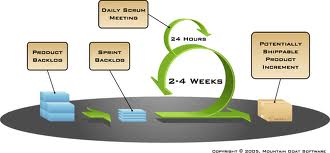Scrum
Scrum is a way for teams to work together to develop a product. Product development, using Scrum, occurs in small pieces, with each piece building upon previously created pieces. Building products one small piece at a time encourages creativity and enables teams to respond to feedback and change, to build exactly and only what is needed.
More specifically, Scrum is a simple framework for effective team collaboration on complex projects. Scrum provides a small set of rules that create just enough structure for teams to be able to focus their innovation on solving what might otherwise be an insurmountable challenge.
However, Scrum is much more than a simple framework. Scrum supports our need to be human at work: to belong, to learn, to do, to create and be creative, to grow, to improve, and to interact with other people. In other words, Scrum leverages the innate traits and characteristics in people to allow them to do great things together.
How does Scrum Work?
Building complex products for customers is an inherently difficult task. Scrum provides structure to allow teams to deal with that difficulty. However, the fundamental process is incredibly simple, and at its core is governed by 3 primary roles.
- Product Owners determine what needs to be built in the next 30 days or less.
- Development Teams build what is needed in 30 days (or less), and then demonstrate what they have built. Based on this demonstration, the Product Owner determines what to build next.
- Scrum Masters ensure this process happens as smoothly as possible, and continually help improve the process, the team and the product being created.
While this is an incredibly simplified view of how Scrum works, it captures the essence of this highly productive approach for team collaboration and product development.





